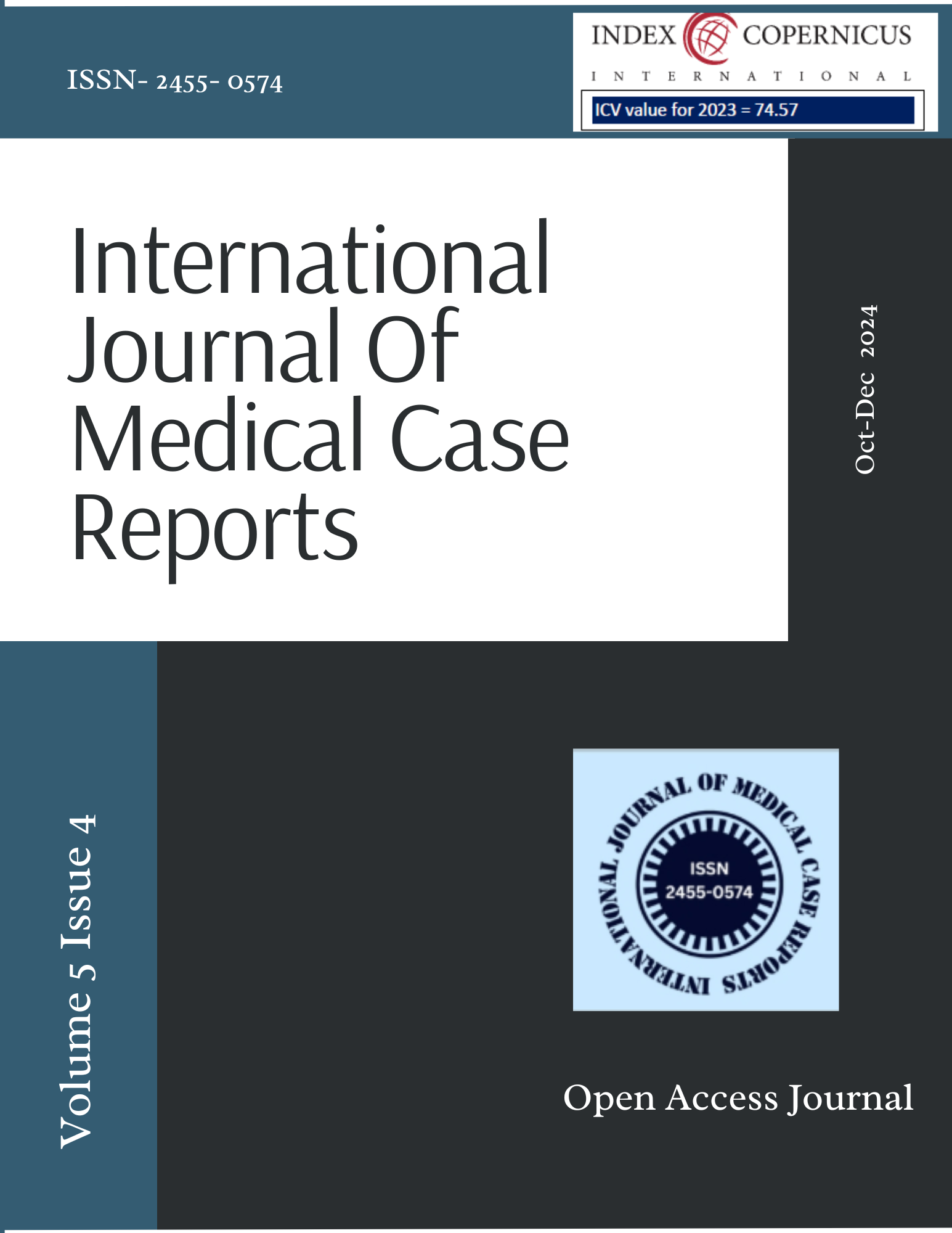Chronic osteomyelitis of tibia with implant exposed outside & it’s successful management: A Case Report.
Main Article Content
Abstract
Introduction:
Osteomyelitis (OM) is an inflammatory process which is accompanied in many cases by bone destruction and caused by an infecting microorganism. Depending upon the duration it can be divided into acute and chronic type. Tibia is the most common site of osteomyelitis because of less soft tissue coverage on anteromedial site and therefore more vulnerable for injury and fractures. Treatment of chronic osteomyelitis is challenging for the orthopedic surgeon because of high chances of recurrence& resistance of microorganisms. Here we are presenting a case report of 54-year-old man, a chronic smoker as well as alcoholic, with chronic osteomyelitis of the right tibial shaft with implant (plate and screw) in situ and exposed outside. He was treated successfully with conventional treatment like antibiotics, debridement, implant removal, multiple drilling of the cortex and VAC dressing in first stage and skin grafting in second stage. Till most recent follow up there are no signs of recurrence. Uniqueness of this case is long term skin loss, plate and screw over the shaft of tibia exposed out for two years with pus discharge, still the case could be managed successfully by conventional management strategy.
Case Report:
A 54-year-old male patient presented to the outpatient department in June 2023 with a wound over the right lower limb, purulent discharge, and exposed plate and screw with a foul odour. The patient had a history of a road traffic accident 3 years prior, resulting in a closed fracture of the lower third tibia and fibula on the right side. He underwent surgery with open reduction and internal fixation (ORIF) using a plate and screws at another hospital. One year post-operation, the patient developed a discharging sinus at the surgical site, which gradually worsened, leading to skin loss and exposure of the plate and screws. The patient was admitted, and the pus discharge was sent for culture and antibiotic sensitivity testing. The culture was positive for MRSA, which was sensitive to Linezolid and Co-trimoxazole. Radiological evaluation showed the fracture was united, with cortical thickening, irregular periosteal reaction, and small lytic areas in the metaphyseal region. Implant removal and wound debridement were performed. Multiple drill holes were made in the cortex, and vacuum-assisted closure (VAC) dressing was applied. After granulation tissue appeared, skin grafting was done, with 95% of the graft taking successfully. The wound healed well. Antibiotic therapy with intravenous medication was given for 3 weeks, followed by oral antibiotics for another 3 weeks. The patient is now walking with full weight-bearing and has had no recurrence to date.
Conclusion:
The rate of chronic osteomyelitis and recurrence is very high in the tibia. In cases of tibial fractures, the appropriate surgical method/implants must be carefully selected. During surgery, minimal handling of the soft tissue is necessary to avoid damage to the blood supply. Long-term antibiotic therapy, based on the culture report and the drug's ability to penetrate bone, is essential. Conventional techniques such as thorough debridement, removal of sequestrum, multiple cortical drillings, vacuum-assisted closure (VAC) dressing, antibiotic cement beads, and bone grafting to fill dead space once the infection is controlled, along with local flap or skin grafting, can be considered. In the future, more trials are needed to identify cost-effective and no
Downloads
Article Details

This work is licensed under a Creative Commons Attribution-NonCommercial 4.0 International License.
